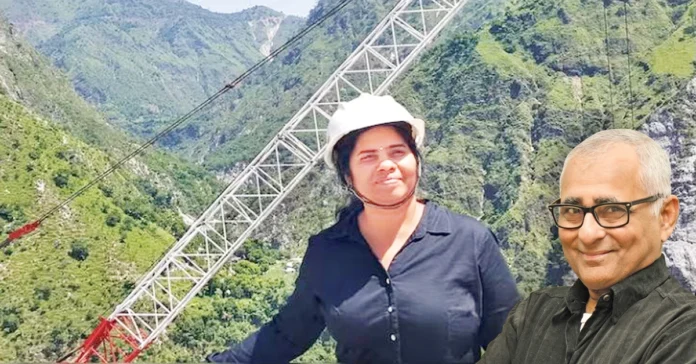By Inderjit Badhwar
In a week dominated by grim headlines—from the collapse of yet another public structure in the capital, to fresh political turmoil and news of deepening divisions—one could be forgiven for thinking that the nation is adrift in chaos, incompetence, and confrontation.
At India Legal, we know that news is not always uplifting. In fact, more often than not, it is sobering. And yet, journalism’s job is not merely to chronicle what is wrong with the world. It is also to spotlight what is right. That is why, despite a turbulent news cycle and the temptation to chase louder stories, we have chosen to feature Kumkum Chadha’s piece on Dr G Madhavi Latha on our cover this week.
In a nation obsessed with power, spectacle, and headlines, she is none of the above. She did not seek the spotlight. She actively resisted it. She did not shout slogans, wage battles, or dominate primetime. What she did instead was quietly, meticulously, and with remarkable perseverance, help build one of the most extraordinary feats of modern engineering: the Chenab Railway Bridge.
For 17 years, Dr Latha, a geo-technical engineer and professor at the Indian Institute of Science, worked with resolve and scientific rigour on a project that many deemed impossible. Rising 359 metres above the river, the Chenab Bridge is now the tallest railway arch in the world. But the height is not just physical—it is symbolic. It represents the pinnacle of human effort, ingenuity, and resilience.
And yet, when the bridge was finally inaugurated amid national celebration, Dr Latha asked the media not to make her “unnecessarily famous”. She reminded us, humbly, that she was “one among thousands” who worked on the project. That gesture alone, in an age of curated vanity and hyper-personalised narratives, is enough to warrant attention.
We need stories like hers. Desperately. We need them not as a distraction, but as an antidote—against despair, cynicism, and apathy. Because not all courage wears camouflage or commands a mic. Some of it wears a lab coat, stands on cliff edges, draws up blueprints, and quietly defies gravity, time, and doubt.
There is, we believe, immense value in recognising this form of heroism. Especially now. In a time when public trust is fraying, when infrastructure collapses seem to mirror moral ones, when young people grow up surrounded by noise instead of substance—there is hope in reminding them that greatness is not loud. It can be silent, studious, and steeped in service.
That is the message we wanted to send—not just to India, but to the world: that in this vast, noisy democracy, there still exist people who rise every morning not to be seen, but to build; not to be celebrated, but to solve; not to grandstand, but to give.
It is also a quiet rebuke to the media narrative that thrives on catastrophe. We are not suggesting we look away from what is broken. Far from it. At India Legal, our coverage of institutional collapse, legal inequities, and policy failures remains as unflinching as ever. But journalism must also be responsible, and responsiveness requires range. It means balancing critique with celebration, scepticism with recognition, despair with possibility.
Highlighting Dr Latha’s story is our editorial act of hope. It is a vote of confidence in the other India—the one that still believes in merit, in science, in nation-building, and in doing the right thing even when no one is watching.
So yes, while buildings leak, bridges crack, and political narratives unravel, a single span of steel across the Chenab River now stands firm. Not just as infrastructure, but as inspiration.
And somewhere, a woman who asked for nothing in return continues her work—teaching, mentoring, building. It is time we not only noticed her, but celebrated her.


